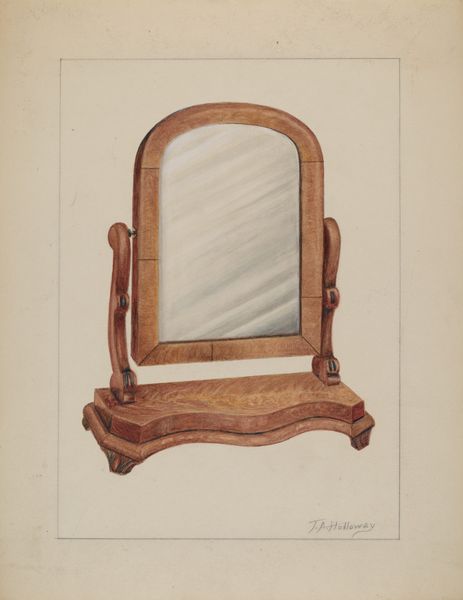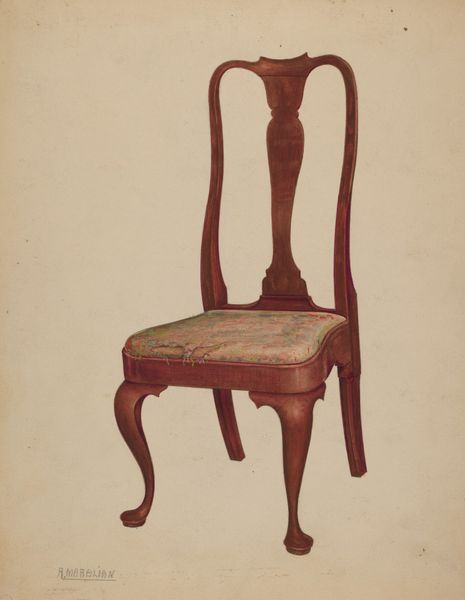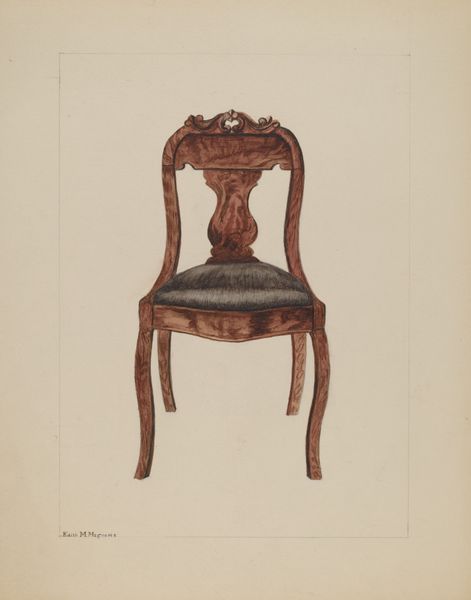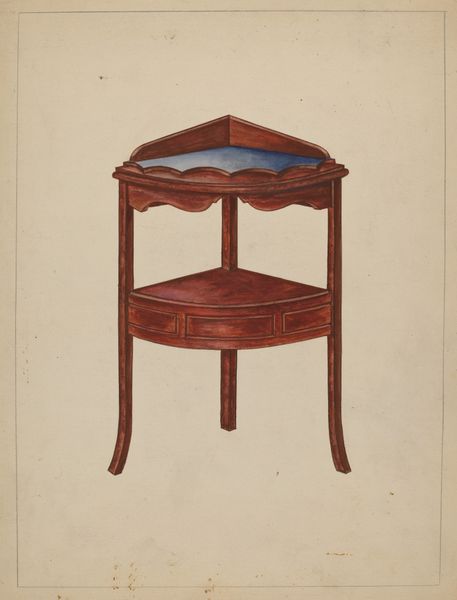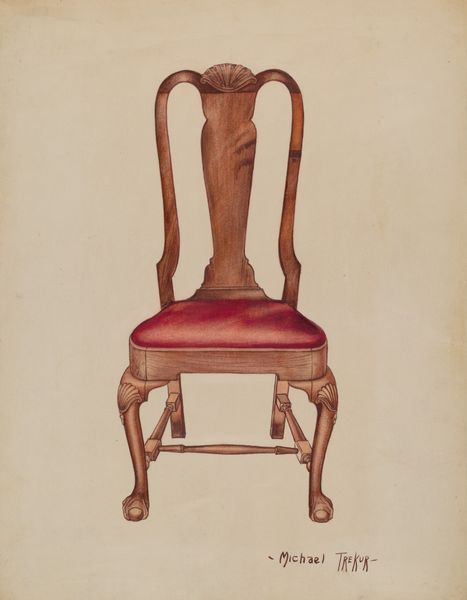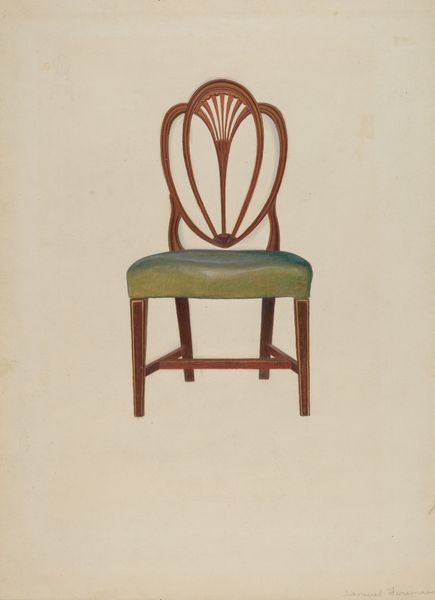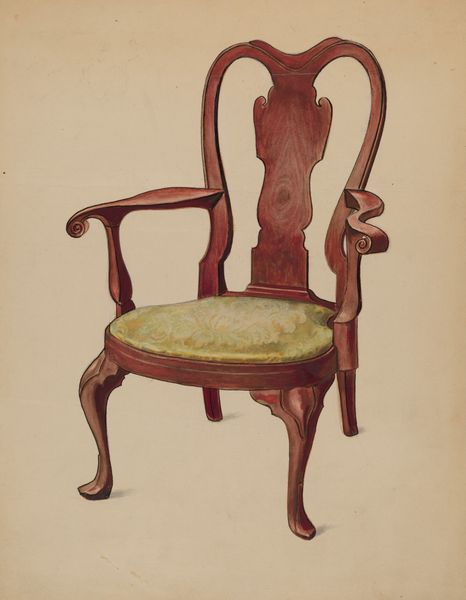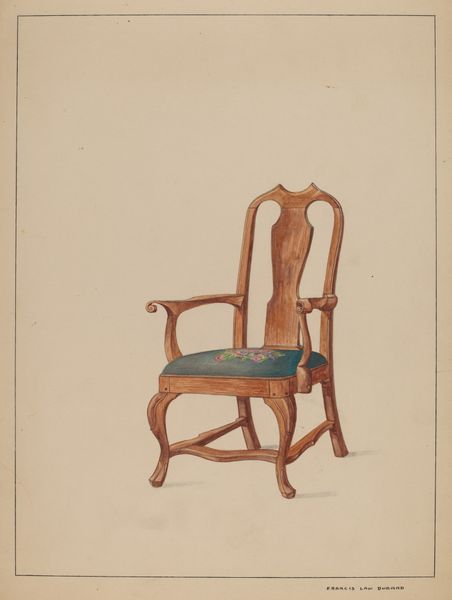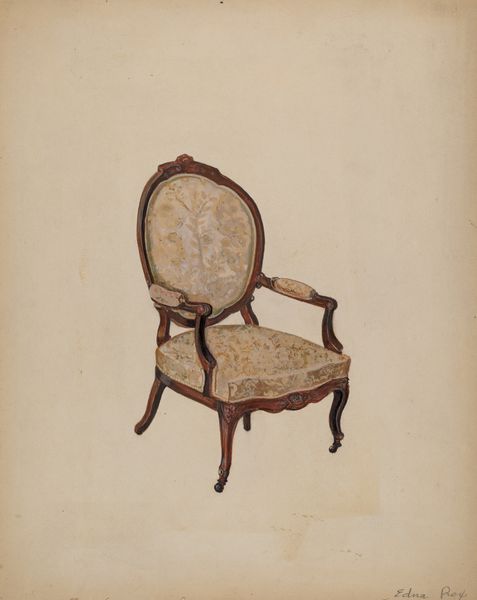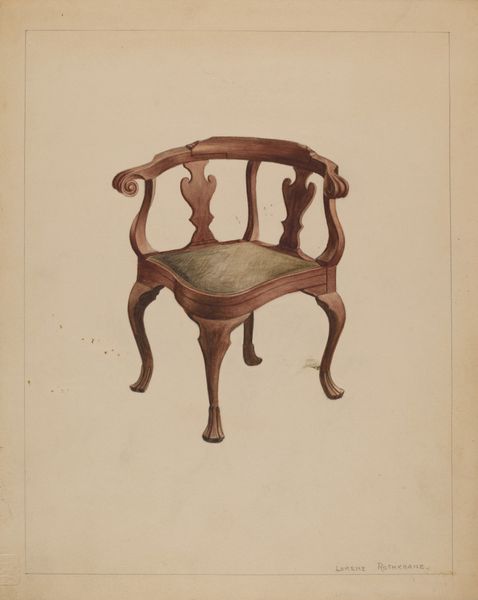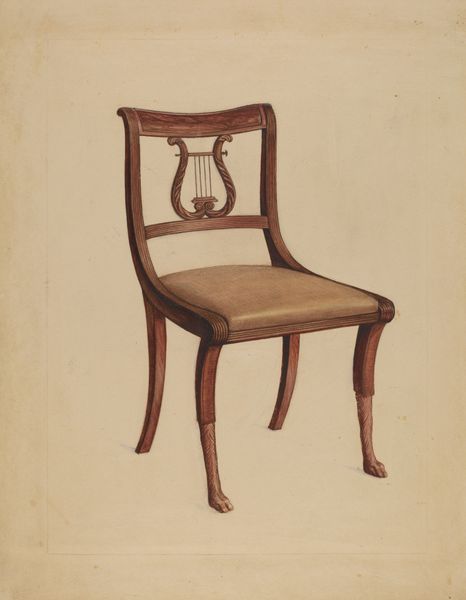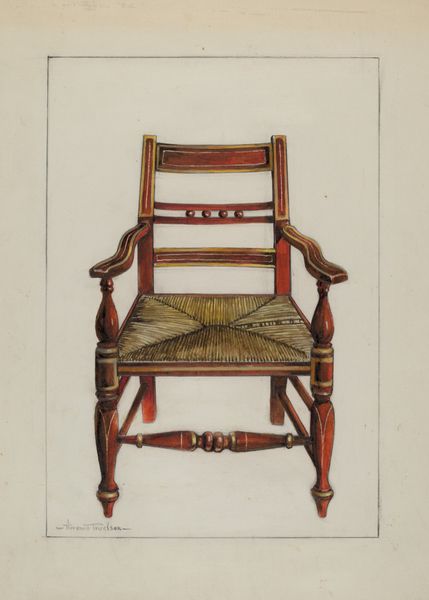
drawing, watercolor
#
drawing
#
caricature
#
watercolor
#
watercolour illustration
#
decorative-art
#
watercolor
Dimensions: overall: 35.4 x 19.2 cm (13 15/16 x 7 9/16 in.) Original IAD Object: 20"high; 19"wide. See data sheet for dets.
Copyright: National Gallery of Art: CC0 1.0
Curator: Well, this looks surprisingly...stately. Almost throne-like, despite being a humble office chair. Editor: Indeed. This is George Kirschner's "Office Swivel Chair," a watercolor and drawing from around 1936. What I find fascinating is its simultaneous embrace of functionality and historical grandeur. The swirling decorative flourishes juxtapose intriguingly with the industrial swivel base. Curator: Yes, there's a definite tension. The ornate wood almost feels like a nostalgic echo of aristocratic furniture, repurposed for the modern workplace. Perhaps a commentary on the blurring lines between power and labor during the early 20th century? I'm seeing a rather heavy symbolism weighing upon this chair. Editor: I'd concur. These types of artifacts gain an identity of class awareness through both the image and intent in decorative-arts; as we recognize today, social settings are defined by them. Think about it— the rise of corporate culture, the white-collar worker... a chair like this becomes a symbol, literally supporting a new kind of social order. Curator: Precisely. And notice the muted color palette. The artist uses subtle hues and textures that suggest a certain... restraint? A quiet elegance that belies the potentially monotonous reality of office life. Even the green hints to prosperity with the colour often associated with currency in those times. Editor: It’s interesting you point out that subtle elegance because these are the things a watercolor manages better. This method brings in an understanding, especially among artists of the period, to create art to emulate life beyond our own. While still retaining a touch of reality in the end results, such as the form and design we recognize in a simple swivel chair. Curator: So, it is less a celebration and more of an aesthetic meditation. It presents an item that, if removed from its image, wouldn't hold nearly as much symbolic importance than it presents today. Very nice catch, with respect. Editor: Thank you, but ultimately, doesn’t art teach us to see the iconic, and even subversive, in the everyday? The swivel chair may have taken its seat in the cultural hierarchy, but it did so in the hopes that someone, such as yourself, could point out the irony to all that observe it today.
Comments
No comments
Be the first to comment and join the conversation on the ultimate creative platform.
